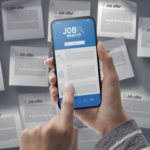Business analytics and reporting are the backbone of any organisation’s decision making processes, and they are therefore, integral to business strategy. A well-designed reporting and analytics platform can help you identify opportunities and trends – and ultimately make better-informed, data-based decisions.
Reporting and analytics are designed to visualise and analyse a company’s performance across all areas, including HR, finance, supply chain, sales, marketing, and so on.
However, the question is, why do the big Enterprise Resource Planning System (ERP) and applications vendors always get reporting and analytics wrong? Although it’s understandable why businesses would want to “lock in” customers, they don’t spend as much on ad-hoc reporting and analytics as they do on their underlying solutions. Graham Spicer, Country Head, EMEA at SplashBI Analytics, outlines five ways why a self service reporting system is vital for businesses.
1. Vendor Reporting and Analytics Platforms
There’s no doubt that an Enterprise Resource Planning System (ERP) can bring immeasurable benefits to any company. In most cases, ERP systems serve as the backbone of any organisation, ensuring that all back office operations run smoothly.
The competitive landscape is characterised by a combination of large, well-known enterprises, as well as rising startups. Growing businesses are faced with an interesting challenge – which is a crowded marketplace. There is no shortage of competitors offering the best products, 24×7 customer service, and a responsive customer experience. During a period when capital, resources and time are all constrained, growing companies must rethink their ERP strategy so that they can meet evolving needs and fuel long-term growth.
2. Data Disuse
Organisations collect a mass amount of data each day – both internally and externally. Yet, growing companies often find themselves surprised when they transition from a legacy ERP system to a more intelligent one, as they find out how much useful and valuable intelligence has been wasted. Furthermore, leadership team members are frustrated when they consider the opportunities that might have been missed from not taking advantage of that wealth of knowledge.
3. Disconnected UX
In all areas of the supply chain, it is critical to connect employees, suppliers, and customers to the right resources and data.
As a result, most organisations have invested considerable time and money developing and adopting various ERP tools; including custom functions and spreadsheet-driven analytics. The ERP landscape increases in complexity, due to various vendors trying to work together efficiently thus requiring more effort to integrate, maintain, and sustain applications, processes, and data.
A unified management centre powered by people, interactive data visualisation , and real-time financial processing can fuel rapid growth. Companies can enable order-based production, product quality visibility, and real-time financial processing online to energise and increase business development. Moreover, by implementing such an intelligent ERP, IT costs could be reduced while controlling productivity and engaging employees in a well-rounded work environment.
4. Bottlenecked
Data-driven insights and confident decision-making are essential to the workforces’ ability to think, understand, and act quickly. Unfortunately, most legacy ERP systems are batch-oriented, limiting the availability of real-time data, even with add-ons intended to enhance the system with real-time information.
5. Listen to the data
Businesses can quickly become swallowed up by their competitors without the effective use of big data. It is imperative that they make decisions based upon what is happening now and what may occur in the future, and set the right course of action to maximise opportunities and minimise risk.
It becomes extraordinarily difficult to guide the business without access to complete and real-time data. The information people need to feed their analytic tools and generate insights – that results in timely and productive action – should be a combination of ERP data, as well as data from other organisations’ applications.
Conclusion
With situational intelligence and data-driven analysis, the right technology is essential in moving a business forward continuously, automatically, and in real-time. As your operations run with such efficiency and effectiveness, your organisation will have the strength of its employees, suppliers, and customers to take on the next challenge as an interconnected team. You gain critical capabilities to ignite present-day and future growth when you make the switch from a legacy ERP to an intelligent ERP.









